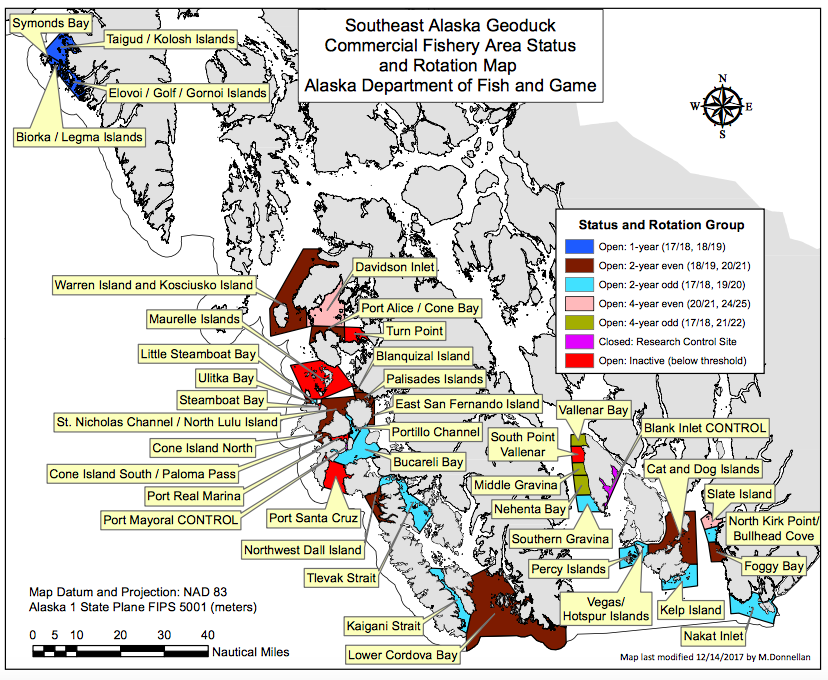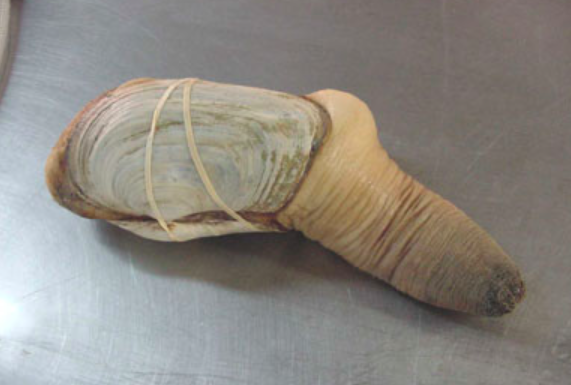CHINA CONSIDERS THEM A DELICACY
From Sitka south to Oregon, geoduck divers are hanging out in coffee shops instead of diving for giant clams.
The market for geoducks, those spectacular squirting shellfish, is dead in the water in the Northwest because the main consumers for the clams are in Hong Kong and China, where geoducks (pronounced gooey-duck) are considered a delicacy.
The issue is that 90 percent of geoducks are shipped live because they can fetch $30 a pound live, and due to the outbreak of the coronavirus, there is no guarantee that ports will be open in Asia to receive a live product.
No harvester wants to risk the investment and have the clams die while waiting for a longshoreman, who may be quarantined in a moment’s notice.

Already, the coronavirus has disrupted the global shipping industry. Some shipping lines have been rerouted, and many are reducing the number of calls to Chinese ports, which is disrupting the supply chain for many industries. While many of think of the popular consumer items such as cars and electronics, the little geoduck industry has already been hit.
There are only a handful of geoduck divers in Alaska, where the giant clam has been endangered by an overpopulation of ambitious sea otters, and where the dive fishery is highly regulated to test for paralytic shellfish poisoning (PSP).
The average size of recreationally caught geoducks on public beaches in Puget Sound, Wash. is 2.47 pounds, according to Washington Department of Fish and Wildlife. One bivalve beauty weighed in at over 8 pounds in the year 2000 and commercial harvesters have reported them even larger. Geoducks reach their maximum size in about 15 years and live as long as 168 years, according to WDF&W.
In 2015, it was a $74 million export industry for the state of Washington.
In Alaska, where the water is colder, it takes geoducks longer to put on weight. Alaska’s geoduck harvest is at about 400,000 pounds, and main harvest areas are Ketchikan’s Gravina Island, Craig, Metlakatla, Wrangell, and Symond’s Bay near Sitka. Geoducks have been harvested in Kodiak, as well.
In Washington and Oregon, the geoduck divers have all been laid off for now, according to Must Read Alaska industry sources. In Southeast Alaska, the divers say they are digging for sofa change instead of diving for geoducks. At least for now.

Pretty lame article this time Susan. First off you cite 2015 alleged profit to Washington State. How about the 2019 stats or even 2018. Then as Alaskans I am assuming most of your report will be on the Alaskan stats but nope nothing tangible at all.
I disagree. Their article is about how the virus is affecting global shipping which affects us all weather it is a penis looking clam horror an container full of toilet paper. I enjoy articles about these clams ever since I used to watch the old frugal gourmet Jeff Smith prepare them on his TV show. It’s nice to have an article every once in awhile it isn’t about how the Senate President and the speaker of the House are deciding what to barbecue for supper.
“Shrivels”?
Suzanne!
Ignutz – I guess I could have said the market is flaccid. 😉 – sd
An average of 2.47 pounds at $30 a pound would put one over $70!
We used to dig these up by the bucketful in Bodega Bay.
They are really not that good, I don’t think.
When prepared right, they are excellent are. Did you tenderize them before frying? Season?
Comments are closed.